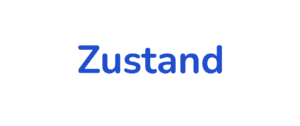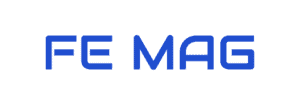A state management solution is essential when developing a web application using React. Selecting the optimal state management library can significantly affect the application’s development process, scalability, and maintainability.
Zustand and Redux are two prominent and well-respected state management libraries. Still, they have distinct pros and cons and may be more suitable for different projects.
In this blog post, I’ll compare Zustand vs Redux to help you choose the perfect library for your project. We’ll discuss several aspects such as simplicity compared to complexity, performance versus ease of use, and flexibility compared to convention. We’ll also provide tips and best practices for working with either library in your React app.
By the time you finish reading, I hope you have a better knowledge of the differences between Zustand and Redux and be able to make a well-informed decision regarding which state management library is the ideal choice for your requirements.
What is Zustand?

Zustand is a state management library designed explicitly for React applications, providing a simple and lightweight manner to manage global state. It was created by the folks behind Jotai and React-spring, and is very straightforward to understand and use.
Zustand facilitates easy access and updates to the global store by leveraging React hooks in components. This feature makes getting started with Zustand a breeze, eliminating the need for props drilling or other methods of passing state between components.
To create a global store with Zustand, you can use the create function, which takes a reducer function as an argument. Similar to Redux, the reducer function determines how the state should be updated in response to actions. Here’s a code example of how to create a simple counter store with Zustand:
import create from 'zustand';
const useCounterStore = create((set) => ({
count: 0,
increment: () => set(state => ({ count: state.count + 1 })),
decrement: () => set(state => ({ count: state.count - 1 }))
}));
export default useCounterStore;
This store includes a count field and two action functions, increment and decrement, which can be used to update the count. To access the store and its actions from a component, you can use the useCounterStore hook like this:
import useCounterStore from './counter-store';
function Counter() {
const count = useCounterStore((state) => state.count)
const increment = useCounterStore((state) => state.increment)
const decrement = useCounterStore((state) => state.decrement)
return (
<div>
<button onClick={decrement}>-</button>
{count}
<button onClick={increment}>+</button>
</div>
);
}
export default Counter;
In this example, the Counter component uses the useCounterStore hook to access the count and action functions from the global store. It renders a simple counter interface with buttons to increment and decrement the count.
Zustand is an ideal choice for those seeking simplicity in their applications. It requires minimal boilerplate code and configuration, making it easy to learn and use – especially with small or straightforward projects that don’t require complex features or flexibility.
Zustand offers a relatively low learning curve if you’re familiar with React hooks. Its official documentation is comprehensive and written in a way that is easy to understand. Moreover, plenty of tutorials and other resources are available online when you need extra help to get started with the library.
The community and ecosystem surrounding Zustand are also supportive. Zustand has a solid user base, so developers can quickly get help or advice when needed. The project is actively maintained and developed, with new releases and updates coming out regularly.
What is Redux?

Redux is a state management library for React inspired by the Flux architecture from Facebook. It was created by Dan Abramov and is widely used in the React community.
Redux maintains a single global store that holds the entire application state. This store is created using a reducer function, which determines how the state should be updated in response to actions. In Redux, actions are pure functions returning objects that describe an event that has occurred in the app, and the reducer function takes the current state as well as an action as arguments and returns a new state.
To create a Redux store, you can use the createStore function from the redux library, like this:
import { createStore } from 'redux';
const initialState = { count: 0 };
function reducer(state = initialState, action) {
switch (action.type) {
case 'INCREMENT':
return { count: state.count + 1 };
case 'DECREMENT':
return { count: state.count - 1 };
default:
return state;
}
}
const store = createStore(reducer);
export default store;
This example creates a simple counter store with an initial state of { count: 0 } and a reducer function that handles two actions: INCREMENT and DECREMENT. The reducer function returns a new state object based on the action type, incrementing or decrementing the count as appropriate.
To access the store and dispatch actions from a React component, you can use the useSelector and useDispatch hooks from the react-redux library. These hooks allow you to retrieve the state from the store and dispatch actions to update the state. Here’s an equivalent example of how to use these hooks to implement the simple counter component using Redux:
import { useSelector, useDispatch } from 'react-redux';
function Counter() {
const count = useSelector(state => state.count);
const dispatch = useDispatch();
function increment() {
dispatch({ type: 'INCREMENT' });
}
function decrement() {
dispatch({ type: 'DECREMENT' });
}
return (
<div>
<button onClick={decrement}>-</button>
{count}
<button onClick={increment}>+</button>
</div>
);
}
export default Counter;
In this example, the Counter component uses the useSelector hook to retrieve the count from the store and the useDispatch hook to dispatch INCREMENT and DECREMENT actions when the buttons are clicked.
Redux is a powerful choice for large-scale applications that demand an advanced state management system. It also has the advantage of being supported by a vibrant, active community with plenty of online resources and assistance.
Despite the benefits of Redux, it can be intricate to learn and use for those unfamiliar with Flux architecture or functional programming concepts. Furthermore, you must write more boilerplate code and configure your settings than other state management solutions such as Zustand. This drawback can make it less appealing for small or simple projects where you don’t need the advanced features that Redux provides.
Although the Redux learning curve may be more challenging than other state management alternatives, numerous resources are available to help developers reach proficiency. The official documentation is comprehensive and provides clear instructions, while you can also access tons of tutorials, video courses, and other learning materials online.
The community and ecosystem surrounding Redux are also extensive and active. There is a large user base for the library, and developers have access to a wide range of resources and support. The project is also well-maintained, with regular updates and new releases.
Comparing Zustand vs Redux
Features
Regarding features, Zustand and Redux have some similarities and key differences. Both libraries allow you to manage and update the global state in your React application, and both provide access to the state via hooks.
Zustand is a more straightforward library, and its core features include hooks for reading and updating state and actions for performing state updates. It’s also lightweight with a small size, built on top of the Context API with hooks, and it provides a minimalistic approach to state management with less boilerplate code.
On the other hand, Redux provides a more robust set of features for state management, including support for middleware and async actions, the ability to handle extensive scale applications, and the ability to use time-travel debugging. It also enforces a strict unidirectional data flow pattern, which is great for debugging and reasoning about your application state. It also provides a powerful toolset and developer experience that may be necessary for large-scale applications.
Complexity
When considering Zustand versus Redux, it’s crucial to be aware of their complexity. Zustand offers an uncomplicated and lightweight library that is conveniently adaptable for small projects, while Redux provides a more robust and feature-loaded solution best suited for large applications. Using Redux, developers can customize the state management system with greater flexibility according to their particular requirements.
Learning Curves
When comparing the two libraries, it is noticeable that Zustand’s learning curve is relatively low and incredibly convenient for developers who are aware of React Hooks. On the other hand, Redux has a more daunting setup process as those new to Flux architecture or functional programming concepts may need help understanding its intricacies.
Communities & Ecosystems
With abundant resources and support, Zustand and Redux offer expansive communities and ecosystems. While the user base for Zustand may be smaller than its counterpart, it is rapidly increasing as users recognize the benefits of this recently introduced library.
Long-term Prospects
Regarding long-term prospects, both Zustand and Redux are highly regarded libraries that will remain in continuous use and support in the future. Nevertheless, Redux has been around longer with a more extensive user base, making it the more reliable and verified solution.
Tips & Best Practices
To help you decide which state management library is the best choice for your React app, here are some tips and best practices:
- Consider the trade-offs involved in each option. Zustand is a simpler alternative to Redux, making it easier for developers to learn and get up-to-speed quickly. However, if you’re looking for more powerful features and flexibility in large projects, Redux is the way to go. Redux is more complex and requires more boilerplate code, but it offers advanced features and is well-suited for large and complex applications
- Evaluate the size and complexity of your app. Zustand is an excellent option for basic and straightforward apps due to its simplicity and user-friendliness. However, when constructing a complex or comprehensive app, Redux may be the better choice, thanks to its robustness and additional features.
- Consider your familiarity with state management concepts. For those unfamiliar with state management and functional programming, Zustand is the ideal starting point due to its ease of use. On the other hand, experienced developers may appreciate Redux’s additional power and customizability.
- Think about the long-term prospects of the library. If you are building an app that you expect to maintain and update over time, choose a library with a large and active community, such as Redux. It will ensure you have access to resources and support as you continue developing and evolving your app.
- Use code examples and tutorials to get a feel for how each library works. There are many code examples and tutorials available for both Zustand and Redux. Experimenting with these can help you understand the differences between the two libraries and how they work.
- Seek out real-world examples of how each library has been used in production applications. This can help you understand the types of projects that are well-suited to each library and how they have been implemented in the past.
Conclusion
Zustand and Redux are both great state management libraries for React. Each presents its distinct strengths and weaknesses that should be considered when deciding.
If you’re looking to create smaller or more specific projects, Zustand may be the ideal selection since it is uncomplicated to learn and use. On the other hand, if your project necessitates more features with significant complexity, Redux would likely offer better results despite its reliance on additional boilerplate code, making it somewhat complicated.
The best choice for your React app will depend on your specific needs and preferences. Consider the size and complexity of your app, your familiarity with state management concepts, the long-term prospects of the library, and the trade-offs involved in each option. Experiment with code examples and seek out real-world examples to get a feel for how each library works, and don’t be afraid to ask for help or advice from the community if you need it.
There are other data management options available for React, such as React Query. If you are considering using a different library for your state management needs, it may be helpful to read the comparison of React Query vs Redux to see which option is the best fit for your project.
As you evaluate your state management options for your app, remember that state management is an essential but often challenging aspect of using React. Choosing the proper state management library for your project can make your development process more efficient and your application more scalable and maintainable.

